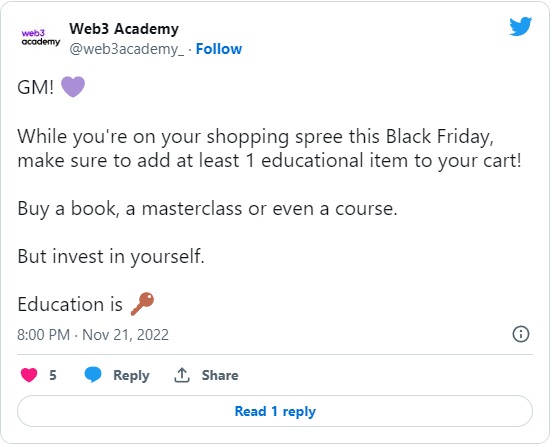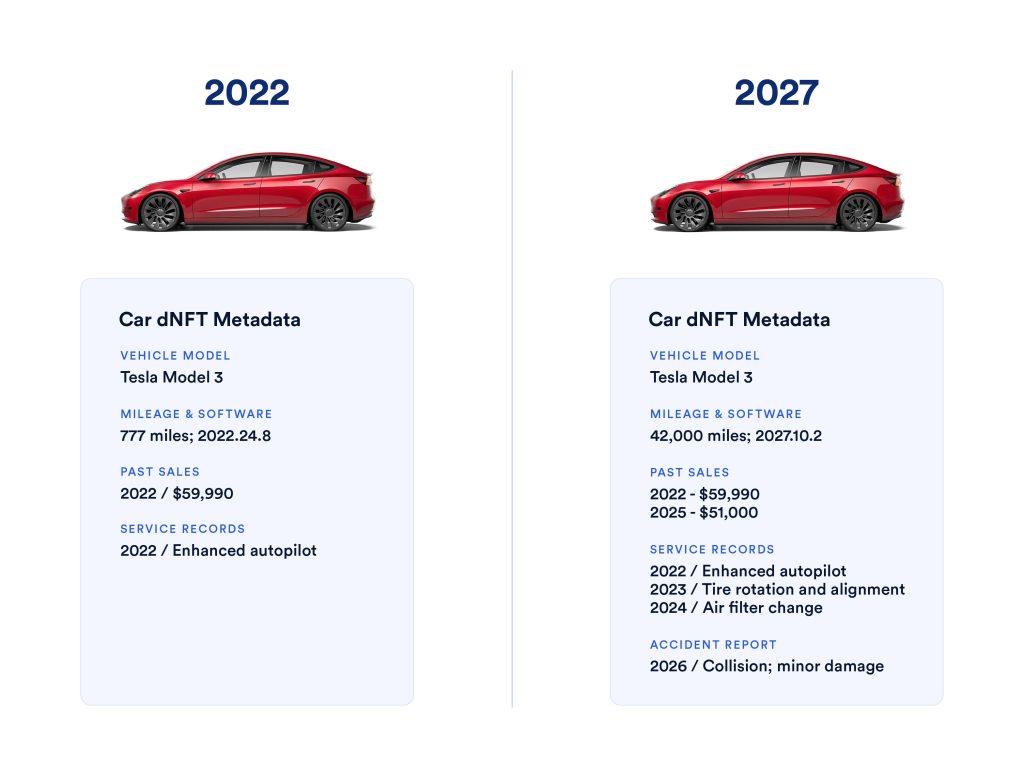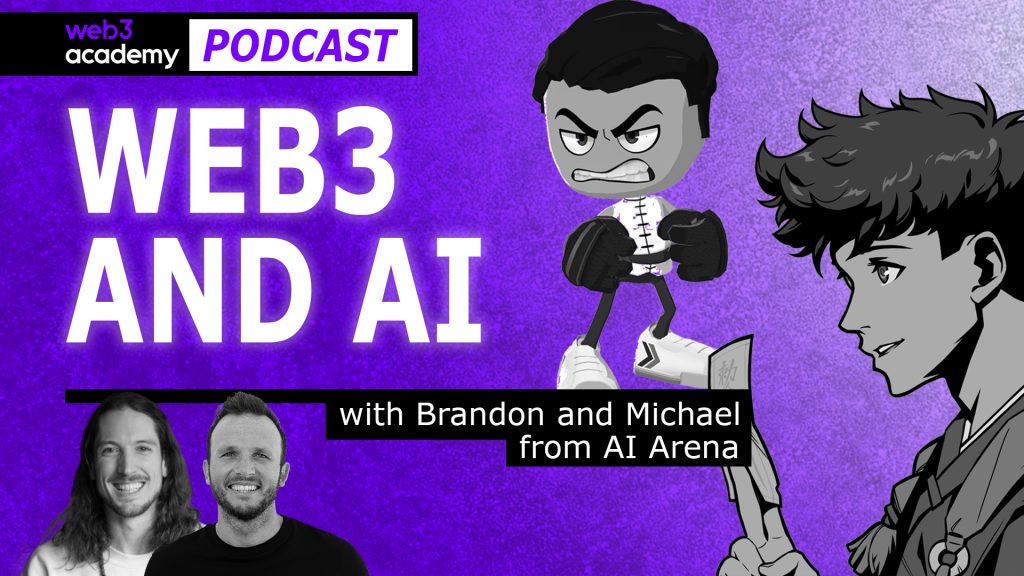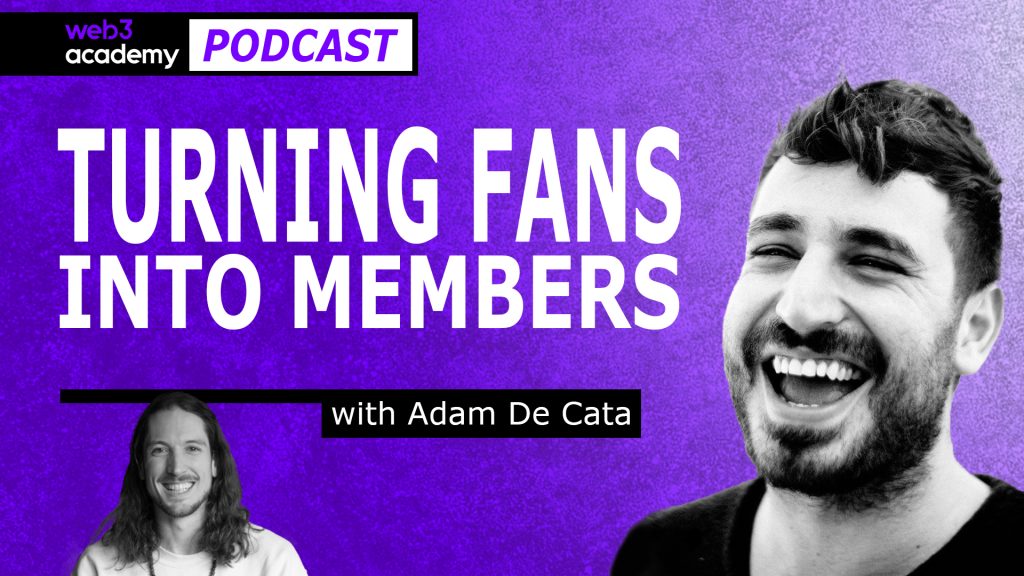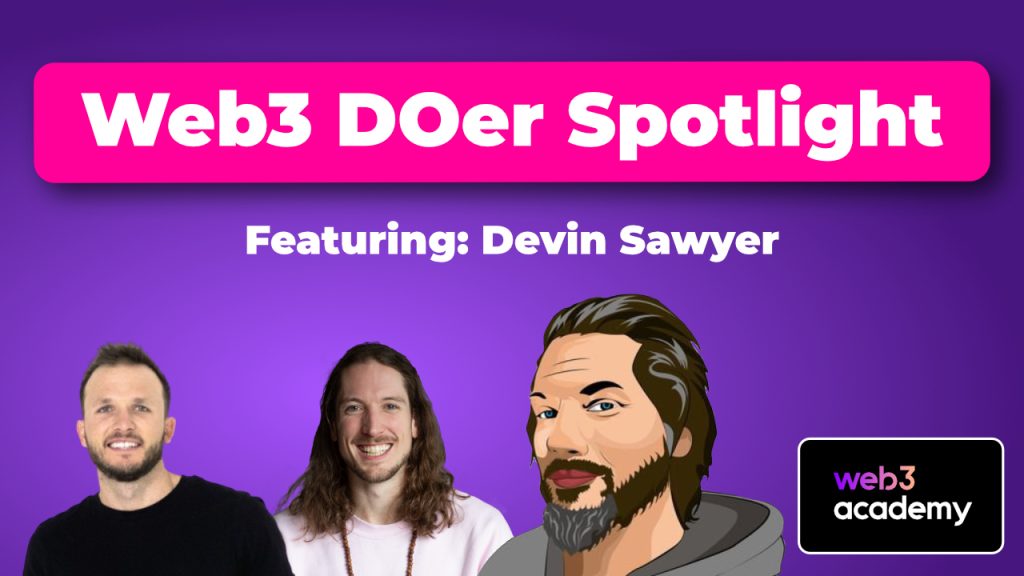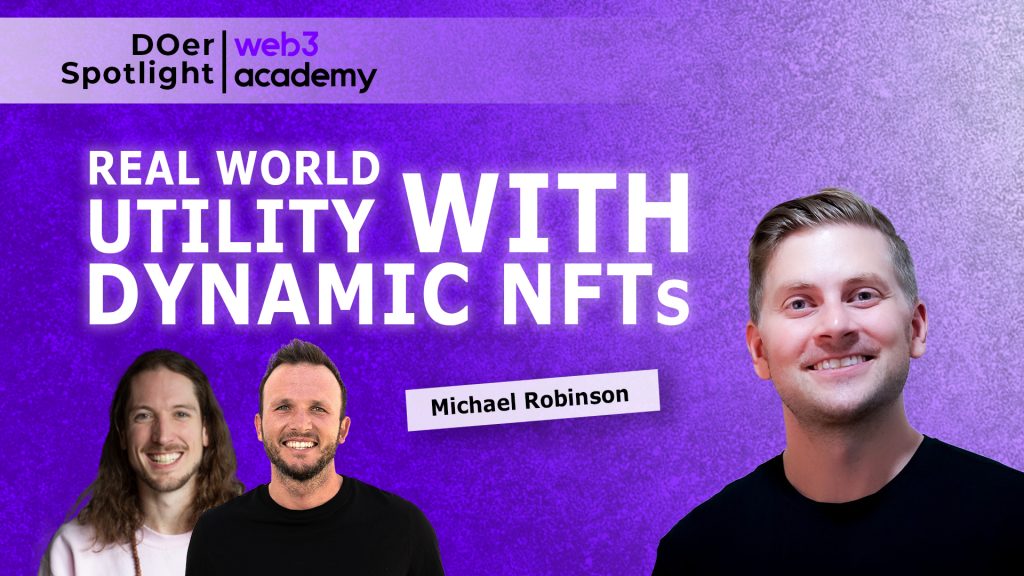
How Dynamic NFTs Provide a Canvas for Real-world Utility | Michael Robinson @ Chainlink
Dynamic NFTs Are Bridging the Gap Between our Digital and Physical Realms
Prefer listening? Get the low down on dynamic NFTs through your favorite platform 👇
GM web3 explorers!
“NFTs are just digital pictures.”
That’s what many people believe until they come to the realization that it’s never been about the pictures themselves. Instead, it’s about the underlying technology and the functionality it enables 🙌
Adding dynamic elements to NFTs enables organizations to update NFTs based on holder actions, live events, or any sort of real-world data. Dynamic aspects also enable the accurate tracking of physical items, such as vehicles, homes, etc.
And to explain these functions, we were joined by Michael Robinson, Product Marketing Manager at Chainlink.
In this week’s DOer Spotlight, we’re breaking down:
- How a non-tech DOer got a job at one of the leading web3 startups 🤯
- What Chainlink is currently working on 🛠️
- Dynamic NFTs and the functions they unlock 🚀
Let’s talk utility!
Tired of web2 social? Then make sure to check out Lens Protocol 👀
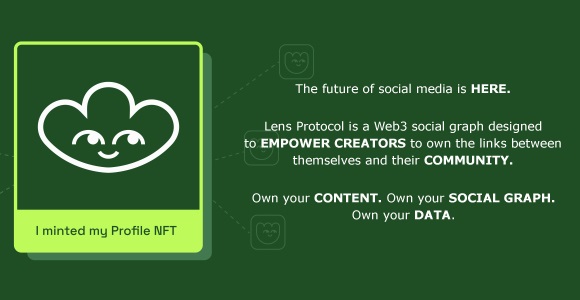
A DOer’s Journey Into Web3
Michael’s web3 journey wasn’t a traditional one. He wasn’t some tech bro that was already working at Google or Meta, nor did he study computer science 🤷
Instead, Michael first found out about Bitcoin through a meme that highlights the power of meme culture in web3. But his real foray into the space came during the Covid-19 pandemic which made him question the world’s current monetary systems.
So did he decide to study computer science or go through a coding boot camp? Not at all.
Instead, he dove straight into DOer mode and joined the first-ever Chainlink hackathon.
In honor of transparency, Michael did study mechanical engineering so he did have some basic coding knowledge. But he’d never built or deployed smart contracts or written any solidity code.
Michael just went in, joined Chainlink’s Discord server, found some great people to work with, and put together a product idea that solved real-world problems.
He proposed using smart contracts for parametric shipping insurance (insurance based on if this, then that logic). So rather than depending on centralized insurance agencies to pay out claims, an action could be automatically executed by smart contracts 🤖
In this instance, an insurance agency could use smart contracts to pay claims based on various conditions being met. For example, a harbor’s water level dropping more than 20 inches may prevent ships from docking and, therefore, warrant an insurance claim.
Pro tip: When attending a hackathon, focus on solving current real-world problems. The Chainlink hackathon was around the time of the Suez Canal shipping crisis, so it made Michael’s project more interesting.

QUESTION
Would You Attend a Hackathon Without Any Technical Knowledge?
A. No way!
B. Sure, why not?
👉 Reply to this email with A or B to let us know!
The Low Down on Chainlink
Chainlink is one of the OG’s of web3 and they’re also one of the most integral protocols when it comes to bringing real-world utility to the space.
Here’s how you can think of Chainlink 🔗
Bitcoin initially solved the problems of peer-to-peer transactions—you can use Bitcoin to send transactions to people anywhere, anytime. Then there’s Ethereum which enables dApps (extra functionality) to be built on top of a blockchain.
Now while blockchains have incredible underlying technology, they have a fundamental problem: Blockchains can’t naturally connect to things outside of their own chain, such as real-world data or other blockchains.
Consequently, we need a way to connect smart contracts to data and in a sense, level up the functionality of smart contracts and dApps—Chainlink provides this way.

The Chainlink Protocol has an ecosystem of over 1,500 projects that have integrated either one or multiple of its technologies.
But right now, Chainlink is most well known for data feeds and price feeds—for example, sharing accurate prices of ETH versus USD (you know those numbers no one wants to look at right now emoji). It’s also possible to track weather data and other useful real-world information.
Without Chainlink, blockchains would be siloed systems that struggle to provide the level of real-world utility that they can right now.
Some of the technology Chainlink is building includes:
- Verifiable randomness: Raffles and lotteries are based on randomly selecting a number from a pool, but how do you know the process was truly random? With Chainlink anyone around the world can verify that a particular piece of data (e.g., a number) was randomly selected. This leads to numerous use cases including internet security, zero-knowledge technology, and automated escrow services.
- Automated audits: In light of recent events, automated on-chain audits are a powerful tool that can prevent users from using undercollateralized exchanges or tokens. For example, Tether or Circle could use this technology to confirm the reserves of their respective stablecoins.
- Chainlink automation: This product brings advanced use cases to web3, such as dynamic NFTs and smart contract automation. It allows organizations to automatically update NFT metadata based on particular events and enables users to use blockchains without needing to actually engage with smart contracts.
In particular, we’re super excited about dynamic NFTs because they provide builders with some serious community-building capabilities.
So that’s what we’re focusing on today.

SOCIALS
Tweet of the Week
So What Are Dynamic NFTs?
Right now, most of the NFTs on the market and the type that people are most familiar with are static NFTs—think CryptoPunks, BAYC, Azuki, etc.
These are what mainstream media likes to ridicule because it sounds crazy when someone buys a “picture” for 6-figures. But we all know that it’s not about the actual picture, it’s about the underlying tech ⚙️
The main difference between static and dynamic NFTs is that the former can’t change while the latter can.
Any changes to a dynamic NFT happen based on specific conditions written into the NFT’s smart contract.
For example, let’s say you were playing a web3 Pokemon game that incorporates NFTs. The game developer could add conditions into the smart contract that change the stats or image of your NFT. This could mean evolving the card after a certain number of battles or making a new skill available.
Now gaming is an obvious use case for dynamic NFTs since there’s almost always some aspect of leveling up. But what about real-world items, such as your vehicle?
While we haven’t seen anyone in the space that’s really working on dynamic vehicle NFTs at the moment, the infrastructure is there. If a company were to focus on this use case, people could link their vehicle with an NFT which could then update based on whatever happens to the vehicle—for example, driving, servicing, accidents, etc.
This immutable item history means no one can change or lie about anything regarding the car—for example, someone can’t manually lower the odometer so the car is worth more.
Here’s what that could look like.
Linking a car to an NFT also makes selling and trading simpler as it requires less trust (all information is on-chain), you can incorporate contracts and paperwork into the NFT itself, and transfers are near instant.
Another use case for dynamic NFTs is in retail loyalty programs.
Since there are often different membership levels (think bronze, silver, gold, etc.), it makes sense to update a loyalty NFT rather than mint a new one. Using dynamic NFTs can also unlock more customizability for customers—for example, an organization could run limited-time loyalty quests with each completion upgrading the NFT in some way.
But enough about hypothetical situations, Chainlink themselves actually partnered with the Australian Open to create dynamic NFTs for the tennis tournament.
Essentially, each NFT gave owners the right to one particular square on the court (about 10 x 10 cm). And if a game-winning shot bounced off someone’s square, their NFT would update, giving them additional privileges and rewards at the event.
So it’s obvious that dynamic NFTs provide a level of utility that’s miles ahead of most projects right now, but does that mean they’re difficult to create?
Not at all.
In fact, there are tons of tools and tutorials that can help speed up the development process. Chainlink itself hosts hackathons alongside providing technology and infrastructure that allows devs to easily create dynamic NFTs.
And remember, it doesn’t matter if you’ve never played in the web3 sandbox.
Take a leaf out of Michael’s book and start building something that you’re passionate about because that’s how you’ll learn the most about this space.
🤝 Together with Unlock Protocol: Making Web3 Memberships Easy
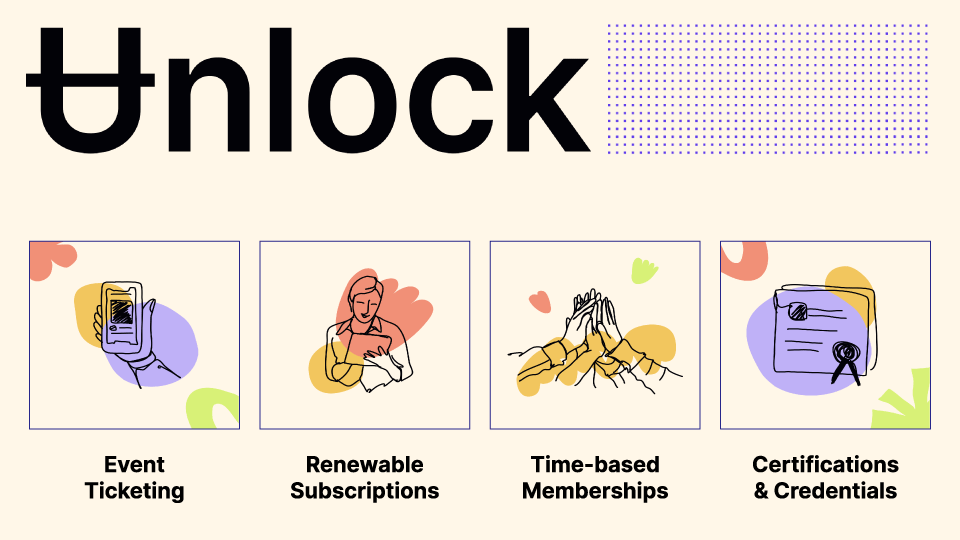
Unlock Protocol lets you create memberships and subscription NFTs in minutes!
👉 LEARN HOW 👈
Real-world Utility is How We Go Mainstream
Sure, it’s been fun playing around with community JPEGs. But all the building until now has been to unlock the real potential of web3 and blockchain technology—to build more advanced smart contracts and solve real-world problems.
We’re still early on the adoption front, but the infrastructure is basically ready. All we’re waiting for are some savvy web3 explorers to take these products to the wider marketplace.
That’s why Michael believes that in just five short years, we’ll see more advanced applications, such as those that use real-world data to do something on the blockchain beyond just speculation and trading tokens.
In fact, we’re already seeing basic dynamic NFTs popping up, such as Budweiser’s scoreboard NFT which changes based on live World Cup data.
So there’s no doubt in my mind that we’ll be seeing dynamic NFTs that solve real-world problems in the near future.

FOR THE DOERS
Take Action & Level Up
READ
Dive into another NFT innovation: 4 Ways Physical Backed Tokens Will Change the Future of Commerce.
FOLLOW
Ensure you don’t miss out on Raul’s shitposting by following Web3 Academy on Twitter!
JOIN
Big fan of the World Cup? Join our Web3 Academy Discord and share some football banter!




